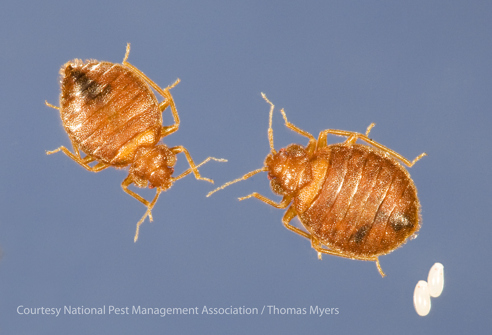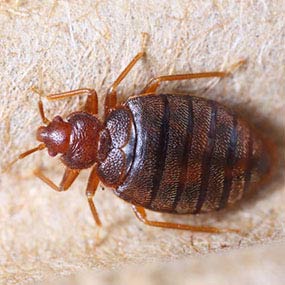Obtain Informed About the Kinds of Bug Control Methods and Their Advantages for House Owners
Comprehending the various pest control approaches offered to homeowners is important for reliable bug monitoring. House owners who are educated can make critical options that not only address pest issues however likewise enhance the total top quality of their living environment.
Chemical Bug Control Approaches
Chemical bug control approaches are a vital element of integrated parasite monitoring strategies for house owners seeking reliable remedies to pest invasions. These techniques include the application of chemical substances made to eliminate or discourage parasites that endanger personal effects, wellness, and comfort. Typical chemicals used consist of insecticides, rodenticides, fungicides, and herbicides, each customized to target specific insects.
The main advantage of chemical parasite control is its fast effectiveness; many formulas offer instant outcomes, decreasing pest populations substantially quickly. Additionally, advances in chemical formulas have led to items that are extra eco friendly and have lower toxicity levels for non-target microorganisms when applied properly.

Organic Parasite Control Strategies
All-natural bug control methods have actually acquired prominence as house owners seek safer and extra lasting options to traditional chemical methods. Organic insect control techniques use natural killers, bloodsuckers, or virus to take care of insect populaces properly. This approach is not only eco pleasant however likewise decreases the threat of harm to non-target types, consisting of valuable bugs and wildlife.
One of the most typical organic control approaches involves presenting all-natural predators right into the setting. Ladybugs can be made use of to manage aphid populations, while nematodes target soil-dwelling parasites like grubs. Furthermore, parasitoids-- microorganisms that reside on or within a host-- can be used to regulate specific bug types by laying eggs inside them, eventually causing their death.
One more technique is using biopesticides, which are originated from natural materials such as minerals, germs, or plants (bed bug exterminator). These items can properly target pests while positioning very little risk to humans and family pets. Overall, biological pest control methods give property owners with a reliable means of bug monitoring that lines up with ecological concepts, advertising a healthier living setting while lowering dependence on synthetic chemicals
Mechanical Parasite Control Approaches
Mechanical insect control methods incorporate a range of methods that physically stop or eliminate parasites without making use of chemicals. These methods are particularly helpful for property owners looking for eco friendly choices while ensuring the security of their home.
One usual method is making use of barriers, such as catches, displays, and internet, which prevent parasites from getting in homes or certain locations. Mounting home window displays can successfully keep insects out, while making use of physical obstacles around gardens can hinder larger bugs like deer or rabbits. Furthermore, mechanical catches made for rodents can capture and get rid of these pests without the need for hazardous materials.
Another reliable approach includes the usage of vacuums and brooms to remove insects directly from surfaces. Normal cleansing and maintenance can significantly minimize bug populations by removing food resources and concealing places. Additionally, using tools like ultrasonic you can find out more insect repellents can hinder numerous pests via sound waves that are unpleasant to them but inaudible to human beings.
Social Parasite Control Practices
Cultural parasite control methods concentrate on changing the environment and management strategies to create conditions that are much less conducive to pest invasions. These methods are essential in preserving a balanced ecological community and lowering the reliance on chemical treatments. By modifying agricultural methods, house owners can effectively hinder parasites while promoting plant wellness.
One usual approach consists of crop rotation, which interrupts the life process of bugs by changing the sorts of plants expanded in a certain location (bed bug exterminator). This not just reduces pest populations yet additionally boosts dirt wellness. Furthermore, intercropping-- planting diverse crops in proximity-- can perplex pests and decrease their capacity to situate their preferred host plants
Water monitoring is one more vital aspect of social methods. Proper watering strategies can protect against standing water, which offers as a breeding ground for mosquitoes and other bugs. Preserving tidiness in and around the home, such as regularly eliminating particles and food waste, can dramatically minimize parasite tourist attraction.
Integrating these cultural techniques right into a comprehensive bug management method allows homeowners to create an atmosphere that naturally discourages insects, thus boosting the effectiveness of other control methods while advertising sustainable gardening and landscape design.

Integrated Parasite Management Approaches
Integrated Pest Administration (IPM) represents an all natural method that integrates various strategies to effectively handle bug populaces while minimizing environmental effect. This method incorporates organic, social, physical, and chemical methods to achieve sustainable pest control. By examining pest populations and their natural adversaries, IPM emphasizes monitoring and determining parasites prior to implementing control measures.
Among the core concepts of IPM is the use of limits, which establish the level of parasite activity that requires treatment. This ensures that treatments are applied just when essential, minimizing the reliance on chemical pesticides. Biological control techniques, such as presenting natural killers or parasites, work in conjunction with cultural practices like plant turning and habitat control to interrupt pest life cycles.
In addition, IPM encourages making use of least-toxic chemical alternatives when intervention is needed, prioritizing items that pose marginal danger to non-target microorganisms and the environment. For homeowners, embracing IPM approaches not only improves the efficiency of pest administration yet also advertises a healthier living atmosphere, fostering biodiversity and reducing chemical exposure. Ultimately, IPM empowers property owners to make enlightened choices that balance insect control with eco-friendly duty.
Conclusion
In conclusion, understanding the different insect control methods encourages home owners to make informed decisions concerning pest administration. Each method-- chemical, biological, mechanical, cultural, and integrated insect administration-- uses unique advantages that provide to various requirements and choices.
Understanding the different insect control techniques readily available to homeowners is essential for reliable bug monitoring.Chemical pest control methods are a vital termite inspection part of integrated official site insect management approaches for homeowners seeking effective services to pest invasions. Overall, organic insect control methods supply house owners with a reliable means of parasite monitoring that straightens with environmental principles, advertising a healthier living setting while lowering dependence on artificial chemicals.
Social pest control techniques focus on changing the environment and monitoring techniques to develop conditions that are much less favorable to pest invasions.In verdict, comprehending the numerous insect control approaches empowers home owners to make educated choices concerning pest monitoring.